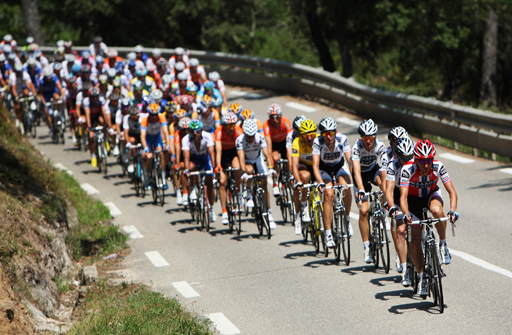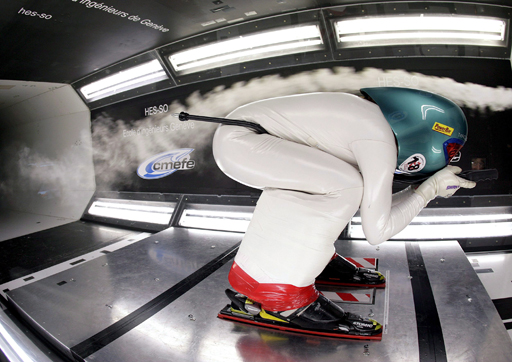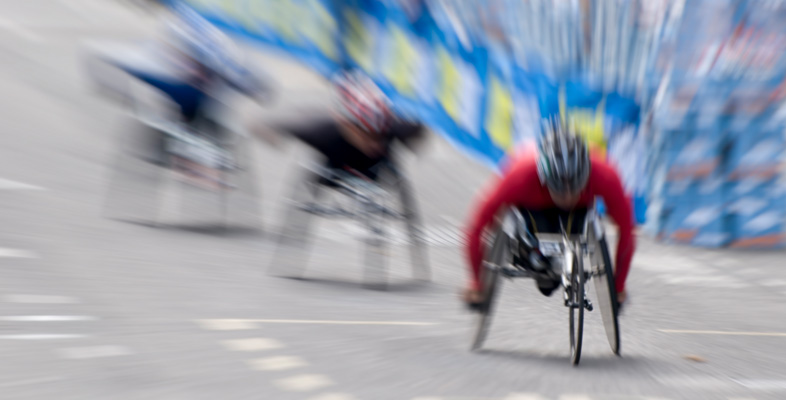2.2 The effect of aerodynamics
The importance of aerodynamics in some cycling events can be judged, to a certain extent, by seeing how much emphasis athletes place on this aspect of the sport.
For instance, in long-distance road races cyclists compete in teams of three or more riders. There are usually very large numbers of cyclists involved, and the competitors tend to ride in one large group, called the peloton (Figure 6). The tactics of each team are based on minimising the effect of air resistance on their best rider. In these large groups, the junior members of each team ride near the front of the group, feeling the full effects of air resistance and consequently becoming very tired during the race, while the most senior member of each team stays behind the front riders, gaining the advantage of reduced air resistance and consequently using less energy. The final stages of a road race are thus usually dominated by the senior members of each team, as they have conserved their energy throughout the race and so have more left for an intense burst of sprinting at the race finish.

The tactics of riders in teams gives some indication of the qualitative importance of air resistance and aerodynamics in cycling, but can this effect be measured? How much advantage is really gained by riding behind another cyclist?
Although aerodynamic effects can be estimated using theory and calculation, the best way to obtain quantitative information is to carry out scientific tests in devices called wind tunnels. Inside these devices, giant fans generate a strong wind in one direction, which enables the air resistance of an object placed in the tunnel to be measured. The airflow around the object can be observed by using smoke or a sensing device placed on the object's surface. Figure 7 shows a speed-skier testing different body positions in one such device.

Measurements of cyclists have shown that riding directly behind another rider can reduce air resistance by as much as 40 per cent! This explains why cyclists in many different events pay so much attention to this aspect of the sport.
